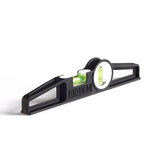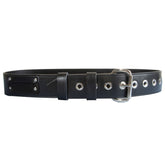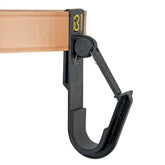Sometimes, it’s the small details that can cause the biggest problems when they’re overlooked. Need examples?
Bolding tire thread = Failed MOT
Lint in the dryer = Fire Hazard
Food crumbs on the counter = Pest Control
You get the picture. When “small” issues aren’t addressed promptly or taken seriously, serious outcomes and consequences may arise, costing more than you thought…and I don’t mean money.
Working at heights comes with its share of risks, but harnesses are designed to mitigate and minimise these dangers, giving you peace of mind as you work.
When your harness isn’t properly and carefully maintained, the more you’re risking your life every time you wear it.
[1]According to figures from the Health and Safety Executive (HSE), there were an average of 42 deaths over five years, with 51 fatalities recorded just last year. These statistics paint a stark picture: it means we're facing the grim reality that nearly one construction worker is losing their life every week. Moreover, statistics revealed that between [2]2022 and 2023, a staggering 51% of all construction fatalities were due to falls from height.
We want to make sure that you know how to inspect your harness properly, thoroughly to maximise your safety each time you secure your harness onto yourself.
Here’s our 8 steps…
1. ID Label
Your safety harness label should clearly display a serial number, date of manufacture, and relevant standards. Make sure the serial number is easy to read, and remember, the manufacture date should not be more than 10 years old.
The harness and lanyard should only be used for a maximum of five years, provided that they do not exceed the 10-year shelf life.
If your harness or lanyard is missing or fails any of the above, then it must be destroyed.
2. Contamination
We know construction can get pretty messy, and the level of dirt generated by the work area can really contaminate your safety hardness. This can result in excessive internal or external abrasion, as well as debris, sand, or grit entering underneath the dorsal D-ring. These hidden issues can lead to severe problems, as workers at height cannot see them.
Therefore, it is crucial to keep the harness, lanyards, and other parts of a fall arrest system properly cleaned and stored safely, ensuring they stay in top-notch condition.
For cleaning advice, we recommend using soap and warm water and letting it dry naturally.
3. Name
Do NOT write your name on your harness, and this will cause the ink to seep into the webbing and weaken it, which will result in a failure under inspection.
4. Plastic Back Plate & Fasteners
It's crucial to inspect the plastics for any cracks or distortion and check for damaged or broken loops. If you find any issues, the harness must be discarded immediately.
5. D-Rings & Adjusters
Examine all metals for signs of distortion, rust, corrosion, or fatigue, and ensure the ring pivots freely. If you spot any of these issues, the equipment must be discarded immediately.
6. Webbing & Stitching
Inspect your equipment for signs that may indicate the structure of the fibres has been compromised. Checking for webbing can be done by examining any signs of damage, such as worn or badly pulled webbing, loose stitching, fading, or cuts and fraying.
It must be noted that a 1mm cut will reduce the strength of the webbing by 35%.
7. Ultraviolet Damage
One factor that impacts the effectiveness of a safety harness is its exposure to ultraviolet (UV) rays.
Visually identifying degradation caused by UV rays can be difficult, but signs of flaking on the surface of the harness or any colour discolouration may be an easy way to look out for them.
8. Connection Hooks
It’s imperative to check for signs of distortion, rust, corrosion, or fatigue on any connection hooks on the lanyard.
You must also check that you can operate the hook using one hand. If this is not possible, or any of these signs are present, do not use it and discard of immediately.
How Leach’s Can Help
At Leach’s, we offer an inspection service where we will thoroughly check your harnesses for a small fee and will fix any repairable areas for an additional cost.
If you still need advice, then please do not hesitate to get in touch with our friendly team, who are there to help. Feel free to contact us by giving us a call on 01432 346 800 or email us at sales@leachs.com
Leach’s Service Technician, Will, offered his very own advice on the matter:
“It’s your own life at risk if you’re not inspecting your lanyard and harness. My advice is to inspect them both after every use; that is what I would do.”
So, can we ask, when was the last time you checked your harness?

[1] https://constructionmanagement.co.uk/huge-concern-over-rise-in-construction-deaths/
























